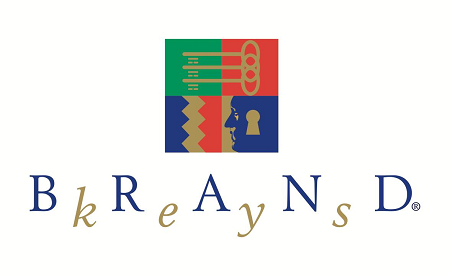Political polarisation and viral social movements like #grabyourwallet, #MeToo, and #TimesUp have dramatically changed the face of brand engagement and consumer loyalty, according to new research.
The findings come from the Brand Keys 23rd annual Customer Loyalty Engagement Index (CLEI), conducted by the New York-based brand engagement and customer loyalty research consultancy Brand Keys.
“This is the first time since the Index was initiated nearly 25 years ago where basic tenets of consumer loyalty and engagement have been turned upside-down,” said Robert Passikoff, president of Brand Keys.
Biggest Shifts In Category Dynamics and Brand Leadership
This year the Brand Keys CLEI examined 84 categories and 761 brands – from Automotive and OTC medications to Computers, Fast-Casual Dining, Tax Preparation and Online Investing, Retailing, Smartphones, Cable and Broadcast News, and Alcoholic Beverages.
How consumers view a category, and how they compare competing brands, changed dramatically in 94% of the measured categories. That shift resulted in brand engagement and loyalty transformation and an accompanying shift in brand leadership of 58%.
“We’ve never encountered such value-adjustments before,” noted Passikoff. “But then, we haven’t seen this level of political polarization and social turmoil occurring at the same time since we began taking these assessments.”
Top Five Sectors Affected
In 2018, the top five sectors that showed the largest shifts in category values and path-to-purchase dynamics were:
1. Instant Messaging
2. Retail
3. Broadcast and Cable News
4. Online Investing
5. Social Networking
What Drives Category Change? Political Tribalism or Social Activism?
The top five sectors reacting most to values like Personal Responsibility, Moral Order, Family Values, Fiscal Conservatism, and Established Social Structures, all associated with Political Tribalism were:
1. Broadcast and Cable News
2. Online Brokerage
3. Banks / Credit Cards
4. Automotive
5. Hotels (luxury)
The top five sectors reacting most to values associated with Social Activism, including Empathy, Equality, Empowerment, Individualism, and Pride, were:
1. Retail (all sectors)
2. Restaurants (all sectors)
3. Social Networking
4. Smartphones
5. Consumer Packaged Goods
Entirely New View of What Consumers See as ‘Ideal’
“’Brand engagement’ is still defined by how well a brand meets the expectations consumers hold for the values that drive purchase behavior in a given category,” noted Passikoff. “But category political polarization and social activism have shaken those values to their core. If marketers think they knew what consumers’ ‘Category Ideals’ looked like before, they need to take another hard look, because consumers have an entirely new-view of what is an Ideal brand,” said Passikoff.
The Future of Successful Branding (Politically and Socially)
“Decision-making has become increasingly more emotionally-driven over the past decade,” said Passikoff. “But the addition of tribal political and activist social values has transformed the brand space into something marketers have never faced. ‘Business as usual’ won’t cut it in this brandscape.”
“We expect to see value and expectation shifts,” said Passikoff, “But we’ve never before measured anything on this scale! Fortunately, the integrated psychological nature of our research methodology allows us to identify newly resonant emotional values and to measure how they impact a given brand category. 2017 was the year that political tribalism and social activism rose to the top and will drastically change how successful branding will be done in the future.”
A complete list of the CLEI’s 84 categories can be found here.
Brand Engagement Today. . . And Tomorrow
“The concept of brand engagement is pretty straightforward,” said Passikoff. “Consumers have an Ideal in mind for every product and service; it’s a yardstick to measure brands. Defining your category’s Ideal is where it gets tricky, as the process is not only more emotionally-based than rational, but is now confounded by newer, nuanced political and social values. And, while the recent Presidential election and its aftermath have raised levels of political debate, especially contentious issues and social activism, and has created far more value-infused and complicated paths-to-purchase for consumers.”
“The result is a massive change in what consumers want and equally massive gaps between what they want and what brands are seen as capable of delivering,” noted Passikoff. “Happily, brand engagement metrics can help identify and close that gap and help marketers stay on the path to profitability.”
Methodology
For the 2018 CLEI survey, 50,527 consumers, 16 to 65 years of age from the nine US Census Regions, self-selected the categories in which they are consumers and the brands for which they are customers. Fifty (50%) percent were interviewed by phone, thirty-five (35%) percent via face-to-face interviews (to identify and include cell phone-only households), and 15% online.
Brand Keys uses an independently-validated research methodology that fuses emotional and rational aspects of categories, identifies four leading path-to-purchase behavioral drivers for the category-specific ‘Ideal,’ and identifies the values that form the components of each driver. Assessments are leading-indicators of consumer behavior, identifying activities 12 to 18 months before they show up in traditional brand tracking surveys.
The assessments measure how well brands meet the expectations that consumers hold for each path-to-purchase driver. The research technique combines psychological inquiry and statistical analyses to deliver a test/re-test reliability of 0.93, and produces results generalizable at the 95% confidence level. It has been successfully used for years in B2B and B2C categories in 35 countries.
Source: www.brandkeys.com

